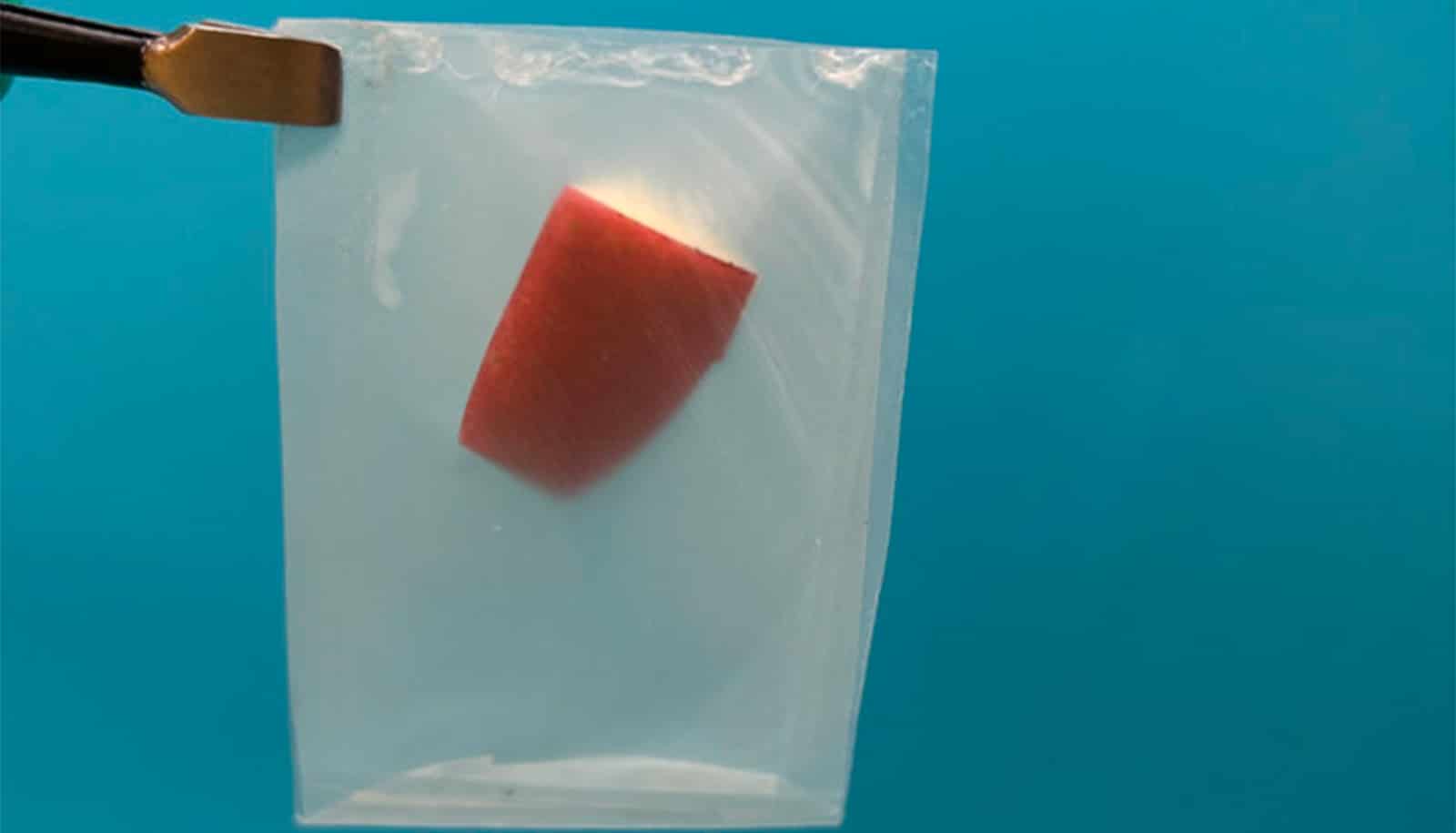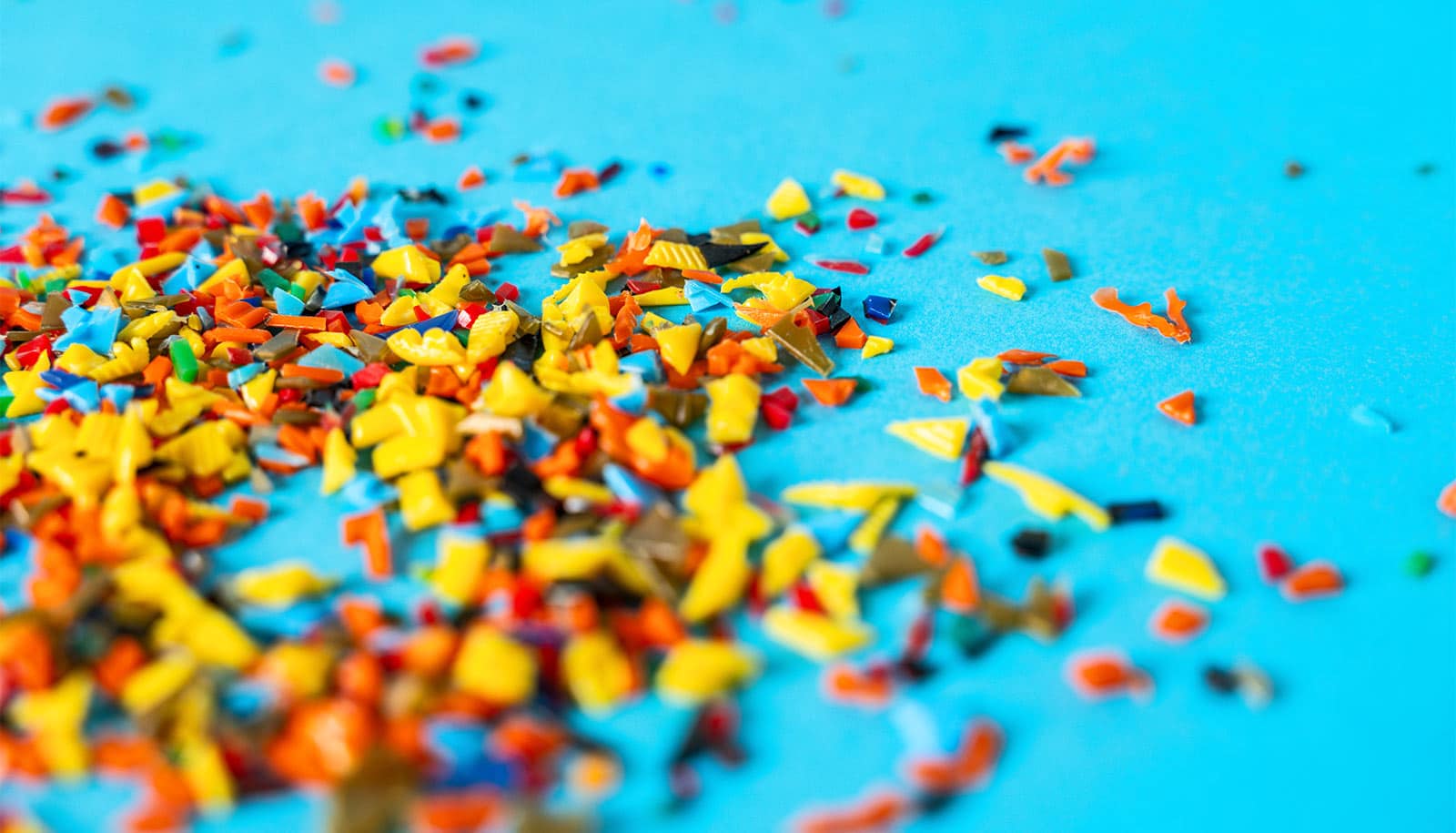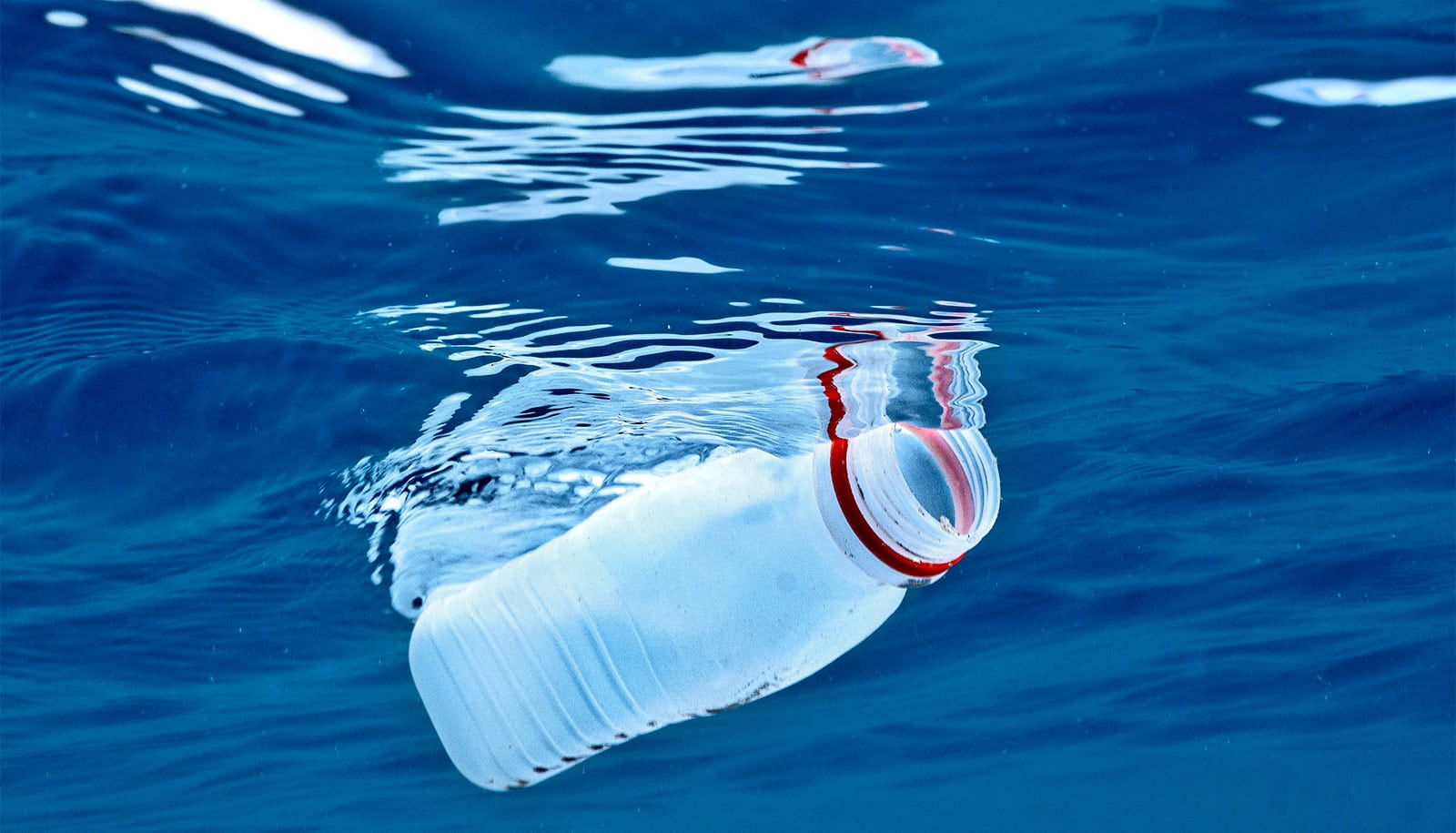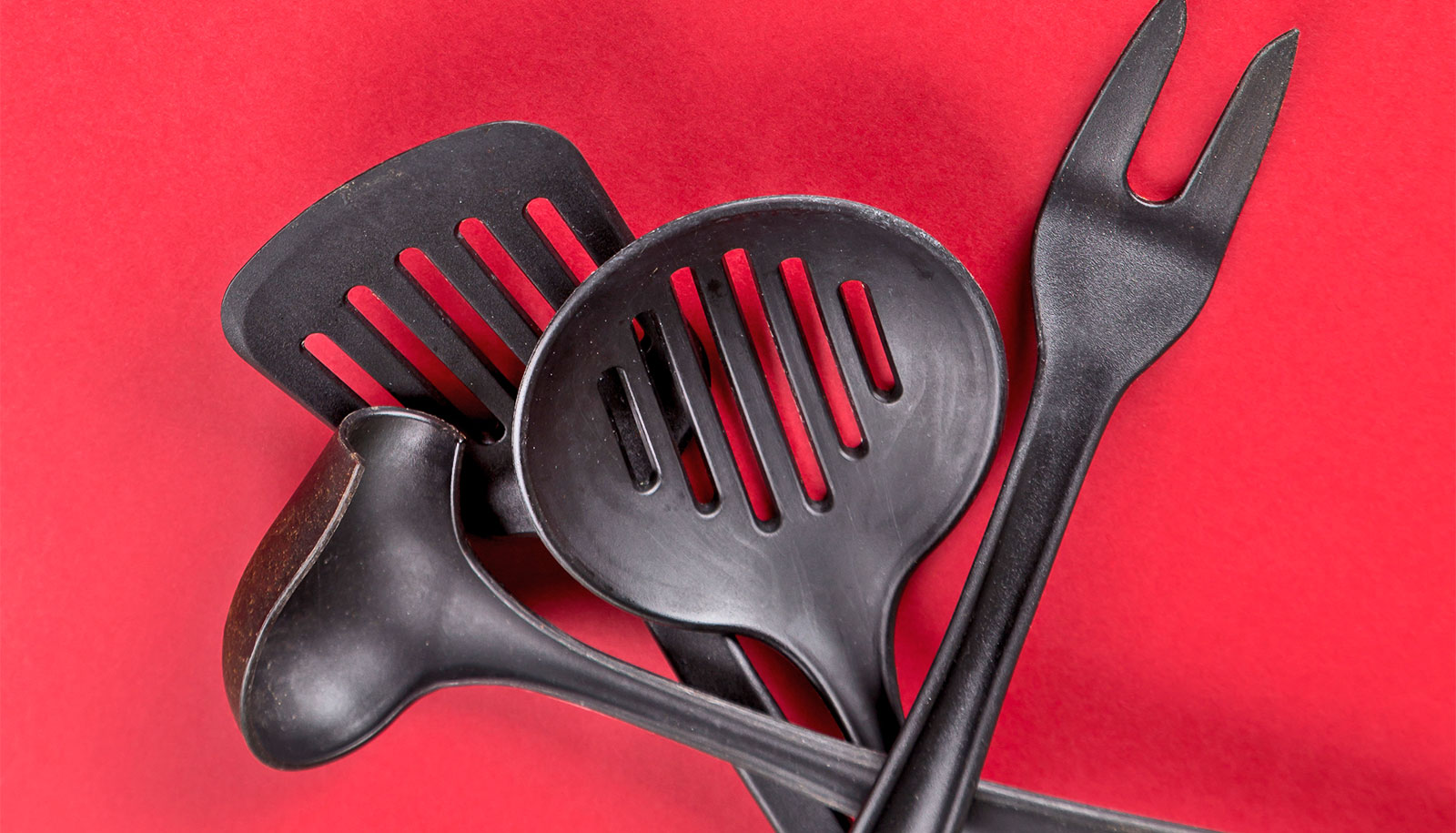A new leaf-inspired design brings bioplastics to the big leagues.
Society has long struggled with petroleum-derived plastic pollution, and awareness of microplastics’ detrimental effects on food and water supplies adds further pressure.
In response, researchers have been developing biodegradable versions of traditional plastics, or “bioplastics.”
However, current bioplastics face challenges as well: Current versions are not as strong as petrochemical-based plastics and they only degrade through a high-temperature composting system.
Enter researchers at Washington University in St. Louis, who have solved both problems with inspiration from the humble leaf.
Long before plastic, humans wrapped their food in leaves, which easily biodegrade due to an underlying structure of cellulose-rich cell walls. Chemical engineers decided to introduce cellulose nanofibers to the design of bioplastics.
“We created this multilayer structure where cellulose is in the middle and the bioplastics are on two sides,” says Joshua Yuan, a professor and chair of energy, environmental, and chemical engineering at the McKelvey School of Engineering. Yuan is also director for the National Science Foundation-funded Carbon Utilization Redesign for Biomanufacturing (CURB) Engineering Research Center.
“In this way, we created a material that is very strong and that offers multifunctionality,” he adds.
The technology emerged from working with two of the highest production bioplastics today. In a study published in Green Chemistry earlier this year, Yuan and colleagues used a variation of their leaf-inspired cellulose nanofiber structure to improve the strength and biodegradability of polyhydroxybutrate (PHB), a starch-derived plastic; they further refined their technique for polylactic acid (PLA), as detailed in a new paper in Nature Communications.
The plastic packaging market is a $23.5 billion industry dominated by polyethylene and polypropylene, polymers made from petroleum that break down into harmful microplastics. The researchers’ optimized bioplastic, called Layered, Ecological, Advanced, and multi-Functional Film (LEAFF), turned PLA into a packaging material that is biodegradable at room temperature.
Additionally, the structure allows for other critical properties, such as low air or water permeability, helping keep food stable, and a surface that is printable. This improves bioplastics’ affordability since it saves manufacturers from printing separate labels for packaging.
“On top of all of this, the LEAFF’s underlying cellulose structure gives it a higher tensile strength than even petrochemical plastics like polyethylene and polypropylene,” explained Puneet Dhatt, a PhD student in Yuan’s lab and first author on the article.
The innovation was in adding that cellulosic structure that engineers replicated, cellulose fibrils embedded within the bioplastics.
“This unique biomimicking design allows us to address the limitations of bioplastic usage and overcome that technical barrier and allow for broader bioplastic utilization,” Yuan says.
The United States is uniquely positioned to dominate the bioplastics market and establish a “circular economy” wherein waste products are reused, fed back into systems instead of left to pollute the air and water or sit in landfills.
Yuan hopes this technology can scale up soon and seeks commercial and philanthropic partners to help bring these improved processes to industry. Competitors from Asian and European research institutions also are working to develop similar technology. But US industries have an advantage due to the country’s vast agriculture system.
“The US is particularly strong in agriculture,” Yuan says. “We can provide the feedstock for bioplastic production at a lower price compared to other parts of the world.”
The “feedstock” Yuan is referring to are chemicals such as lactic acid, acetate, or fatty acids like oleate, products of corn or starch fermentation by microbes that serve as bioplastic factories.
Pseudomonas putida, for instance is a microbial strain widely used in the fermentation industry, including to produce a variety of polyhydroxyalkanoates (PHA), including PHB.
Researchers have designed ways to convert various wastes, including carbon dioxide, lignin, and food waste, into bioplastics using strains such as P. putida. With improved bioplastic design, Yuan’s research further fills in that loop, with a version of PHB and PLA that could be produced much more efficiently and degrade safely into the environment.
“The United States has a waste problem, and circular reuse could go a long way to turning that waste into useful materials,” Yuan says. “If we can ramp up our bioplastic supply chain, it would create jobs and new markets,” he says.
Support for the work came from the NSF and US Department of Energy BETO (Bioenergy Technologies Office) Projects.



